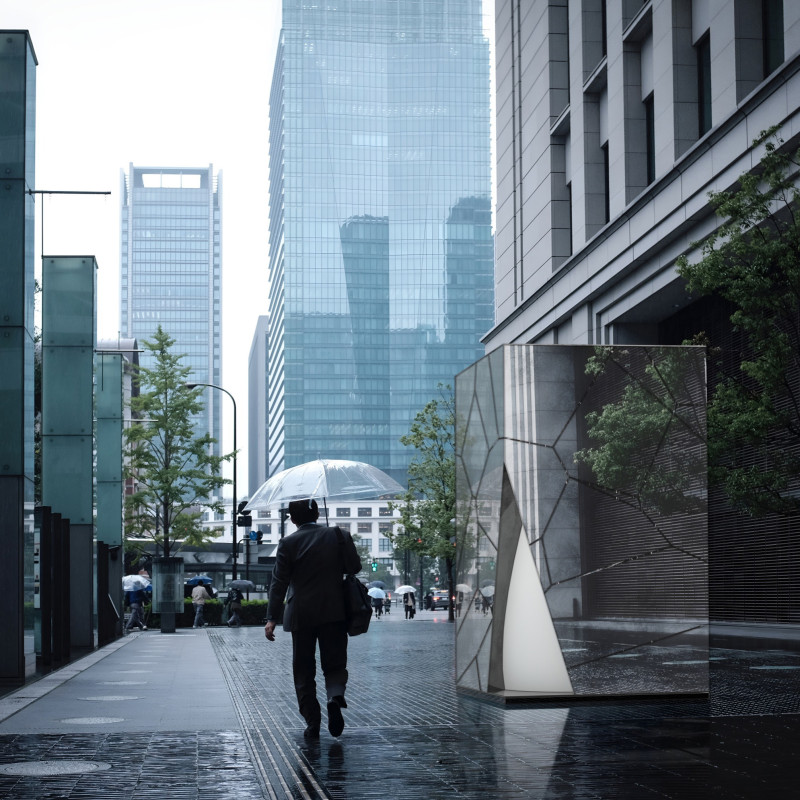5 key facts about this project
The meditation cabin offers a calm space within the busy urban setting. Designed as a place for reflection and mindfulness, the cabin serves an important function in everyday city life. It creates an intimate environment where people can pause and engage in meditation, stepping away from their hectic routines. The design draws from the meaning of the word "meditation," which relates to contemplation and self-reflection.
Geometric Composition
The cabin is defined by its monolithic form, which features a squared base and employs the golden ratio in its front design. This focus on geometry not only enhances its visual appeal but also ensures a balanced presence within its surroundings. The reflective surface interacts with the city, mirroring movements and sights, while inviting users to experience a moment of stillness.
Materiality
Three key components make up the cabin's structure: a wooden framework, a mirrored exterior, and a semi-translucent interior. The wooden structure adds warmth and a sense of natural comfort. The mirrored skin provides a strong visual connection to the environment, allowing the urban landscape to become part of the cabin's identity. Inside, semi-translucent materials allow light to filter in softly, creating an atmosphere that supports relaxation and meditation.
Spatial Experience
Inside, the cabin features a circular design that encourages individuals to feel embraced as they enter. A circular opening at the top invites light to stream into the space, illuminating the interior and inviting contemplation. This relationship between light and form enhances the cabin's purpose, allowing users to focus on their thoughts and feelings in a tranquil setting.
The design emphasizes a thoughtful integration of interior and exterior elements. Natural light fills the space, guiding attention inward while creating a sense of connection with the outside world.



















































